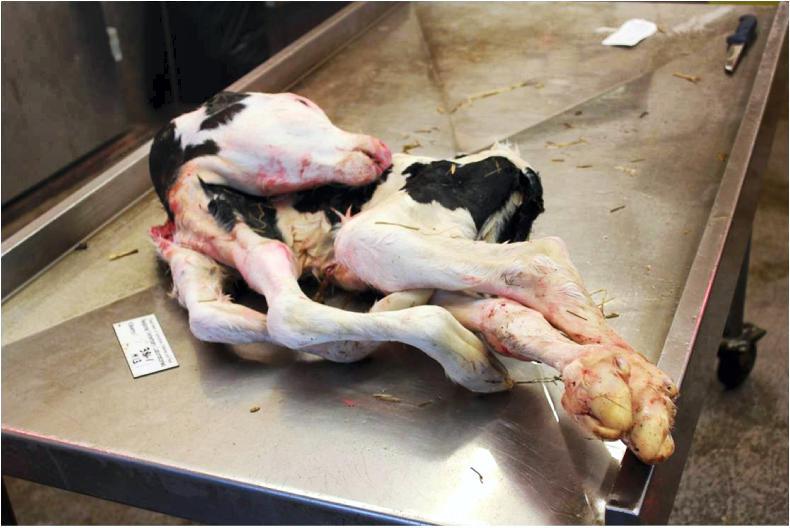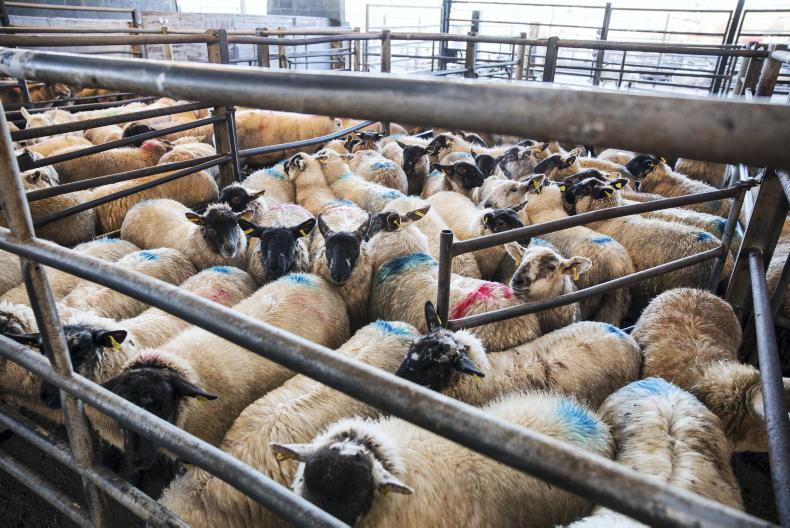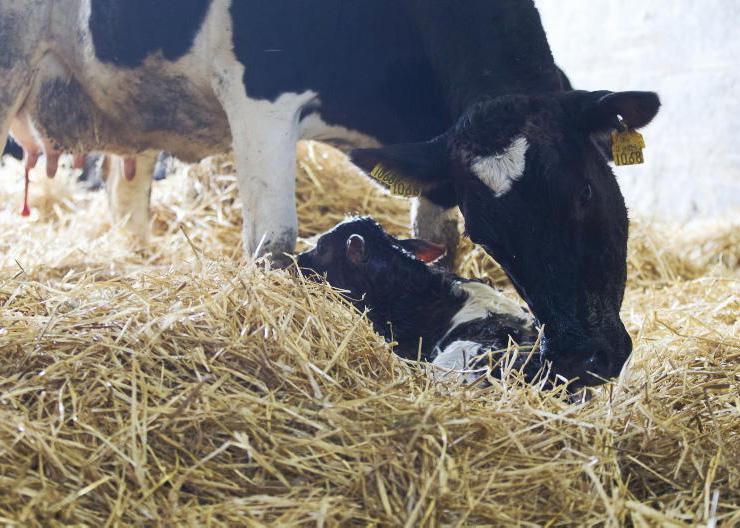Recent Irish Farmers Journal articles have demonstrated how Schmallenberg virus has over five years progressively colonised the whole island of Ireland. Although a relatively mild pathogen, in national terms, Schmallenberg had some very damaging and costly effects on individual sheep and cattle farms in terms of abortions and deformities at birth.
It is the first vector-borne disease to hit Ireland since malaria was present in Cork in the 1860s and serves as a good example as to how a virus which is spread by flying insects can establish and operate very effectively within Ireland. It shares many of those features with the bluetongue virus, which is worrying due to the negative trade impacts that the latter would have should it enter this country.
First there was Schmallenberg’s introduction – the accepted thinking is that it entered Ireland for the first time during early August 2012 being transferred initially into the southeast via infected midges borne on the wind from the UK. Bluetongue is currently in the north of France and the UK itself is considered at a high risk from an introduction during autumn 2018 – next step, Ireland.
Then there is how it spread – over the next five years Schmallenberg infection spread both northwards and westwards to reach in the stage in late 2017 that the whole country is affected. It spread disjointedly across counties rather than steadily as was predicted, showing that there still isn’t a full appreciation on what drives these vector-borne disease outbreaks. Bluetongue is also spread by midges and could similarly occupy the entire country within a couple of years of its arrival.

Schmallenberg disease had devastating effects on Irish farms in the spring of 2013 as the disease spread from mainland Europe with losses occurring to both lambs and calves born deformed and stillborn.
The threat from any virus which is transmitted by midges is very seasonal – it increases rapidly as the midge population increases, tending to peak in August and September and all but disappears in the heart of winter when such insects don’t move around. So for both viruses, there is a clear higher risk period – good to know if buying in stock or putting expensive animals in calf.
Across both viruses, it’s extremely hard to avoid infections once they enter a region. When herds are tested for exposure to Schmallenberg virus, a very high proportion of animals (but not all) are antibody positive which means that the midges are biting and infecting a high degree of the herd – so much so that some animals are probably getting multiple doses of the virus. There is no bulletproof method of preventing animals getting bitten by midges and therefore no bulletproof way of avoiding Schmallenberg virus or Bluetongue once they are here.
For both Schmallenberg virus and Bluetongue, the worst of the viruses effects are on lambs and calves during pregnancy – partially because in Europe many animals are pregnant when the midge numbers are at their highest and partially because of which developing cells the viruses like to attack with the biggest impacts and losses seen in foetal and very young calves and sheep.
And finally there is an inability to exert meaningful control – no country has been able to exert any sort of sustained control on Schmallenberg virus and bluetongue containment also has had limited success. While good vaccines do exist, their uptake is voluntary and uneven which limits their effectiveness. The EU has not taken a strong stance on Schmallenberg virus and is somewhat softening its line on bluetongue support as well.
Difference
One difference between the two is that while Schmallenberg appears to all the same strain, bluetongue has a number of different strains which vary in the extent of clinical signs they cause among cattle, sheep and goats. France has been experiencing an outbreak of buetongue types 4 and 8 for a couple of years, with some animals have been found to be infected with both strains of the virus. Clinical signs tend to be vague – milk drop, temperature increase, loss of appetite, nasal discharge, weakness and only sometimes swelling in the facial area. The Department has a factsheet on bluetongue clinical signs on its website.
Important to state that these viruses are no threat to humans and are not transmitted in food but as we enter the really high risk period let’s all hope that lessons learned from Schmallenberg will serve us well in keeping bluetongue from these shores.
Recent Irish Farmers Journal articles have demonstrated how Schmallenberg virus has over five years progressively colonised the whole island of Ireland. Although a relatively mild pathogen, in national terms, Schmallenberg had some very damaging and costly effects on individual sheep and cattle farms in terms of abortions and deformities at birth.
It is the first vector-borne disease to hit Ireland since malaria was present in Cork in the 1860s and serves as a good example as to how a virus which is spread by flying insects can establish and operate very effectively within Ireland. It shares many of those features with the bluetongue virus, which is worrying due to the negative trade impacts that the latter would have should it enter this country.
First there was Schmallenberg’s introduction – the accepted thinking is that it entered Ireland for the first time during early August 2012 being transferred initially into the southeast via infected midges borne on the wind from the UK. Bluetongue is currently in the north of France and the UK itself is considered at a high risk from an introduction during autumn 2018 – next step, Ireland.
Then there is how it spread – over the next five years Schmallenberg infection spread both northwards and westwards to reach in the stage in late 2017 that the whole country is affected. It spread disjointedly across counties rather than steadily as was predicted, showing that there still isn’t a full appreciation on what drives these vector-borne disease outbreaks. Bluetongue is also spread by midges and could similarly occupy the entire country within a couple of years of its arrival.

Schmallenberg disease had devastating effects on Irish farms in the spring of 2013 as the disease spread from mainland Europe with losses occurring to both lambs and calves born deformed and stillborn.
The threat from any virus which is transmitted by midges is very seasonal – it increases rapidly as the midge population increases, tending to peak in August and September and all but disappears in the heart of winter when such insects don’t move around. So for both viruses, there is a clear higher risk period – good to know if buying in stock or putting expensive animals in calf.
Across both viruses, it’s extremely hard to avoid infections once they enter a region. When herds are tested for exposure to Schmallenberg virus, a very high proportion of animals (but not all) are antibody positive which means that the midges are biting and infecting a high degree of the herd – so much so that some animals are probably getting multiple doses of the virus. There is no bulletproof method of preventing animals getting bitten by midges and therefore no bulletproof way of avoiding Schmallenberg virus or Bluetongue once they are here.
For both Schmallenberg virus and Bluetongue, the worst of the viruses effects are on lambs and calves during pregnancy – partially because in Europe many animals are pregnant when the midge numbers are at their highest and partially because of which developing cells the viruses like to attack with the biggest impacts and losses seen in foetal and very young calves and sheep.
And finally there is an inability to exert meaningful control – no country has been able to exert any sort of sustained control on Schmallenberg virus and bluetongue containment also has had limited success. While good vaccines do exist, their uptake is voluntary and uneven which limits their effectiveness. The EU has not taken a strong stance on Schmallenberg virus and is somewhat softening its line on bluetongue support as well.
Difference
One difference between the two is that while Schmallenberg appears to all the same strain, bluetongue has a number of different strains which vary in the extent of clinical signs they cause among cattle, sheep and goats. France has been experiencing an outbreak of buetongue types 4 and 8 for a couple of years, with some animals have been found to be infected with both strains of the virus. Clinical signs tend to be vague – milk drop, temperature increase, loss of appetite, nasal discharge, weakness and only sometimes swelling in the facial area. The Department has a factsheet on bluetongue clinical signs on its website.
Important to state that these viruses are no threat to humans and are not transmitted in food but as we enter the really high risk period let’s all hope that lessons learned from Schmallenberg will serve us well in keeping bluetongue from these shores.











SHARING OPTIONS